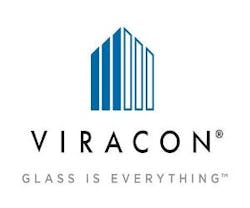BUILDING OWNERS AND DEVELOPERS: DO YOU KNOW YOUR VLT PERCENT?
Developing and operating a building to optimize performance, increase the productivity of those who use it, and keep costs as low as possible is a complex balancing act.
So, of all the things that a building owner or developer needs to worry about, why should you care about Visible Light Transmission (VLT)?
VLT is the percent of natural daylight that passes through the glass of a building. A higher VLT indicates more daylight in a space, which, if designed well, can offset electric costs (reduced electric lighting), and heating and cooling costs (from turning off the lights). A lower number indicates less natural daylight.
Because every building space is different and is affected by both the interior use as well as exterior factors, such as the local climate (imagine the difference between a building in Phoenix vs. Winnipeg), choosing the right VLT for your building is critical in helping in optimizing its energy consumption.
Optimizing spaces with natural daylight cannot only have an impact on the bottom line costs of operating a building, but in making the interior space more comfortable, more healthy, and more productive for those who use it.
VLT is affected by several factors, including:
• The number and thickness of glass panes used in a glass unit
• The coating and tinting of the glass panel (from 90% for uncoated, low-iron glass to 10% for highly reflective coatings on tinted glass)
• Enhancements applied such as silk-screen patterns or digital printing
TUNING-IN TO A BUILDING’S NEEDS
The challenge: balancing all of the above factors to meet the building owner’s needs including an aesthetically pleasing building at a competitive price (cost per square foot).
Finding the right balance of light is very important. Occupants will turn lights on or increase artificial light use in rooms that are too dark, wasting energy and increasing heat generated (and as a result, they may adjust the temperature within a room, which also may add to energy costs). In addition, they may pull the blinds to reduce glare of the light coming into the room. Occupant complaints turn into additional hours spent by maintenance professionals to make a building space more comfortable for those who use it.
In years’ past, tints and coatings reduced solar gain, but often at the cost of visible light transmission (which reduced the amount of natural light coming into a room). But through continuous innovation, today’s high performance coatings make it possible to both reduce solar heat gain while targeting a specific visible light transmission. At the same, from an aesthetic perspective, high performance coatings also can provide a more consistent look (in terms of consistent color) from glass panel to glass panel.
Take for example Viracon’s newest coating, VRE-43. The VLT percentage is 43%, the Solar Heat Gain Coefficient (SHGC) is 0.22, and the Exterior Reflectivity is 25% on clear glass combined with a neutral appearance.
In our consultations with architects around the world, we have heard many requests for a VRE coating with reduced exterior reflectivity and SHGC while still maintaining the same great VRE color neutrality featured on more than 2,000 buildings around the world. Through a patented process, VRE-43 meets the operational demands of building owners, and the aesthetics of the coating meets the current trend of delivering a vibrant, energetic exterior appearance, sought after by architects.
WHAT’S NEXT
In today’s marketplace, momentum is increasing for building and retrofitting carbon-neutral spaces.
And why not?
To building owners, it makes perfect sense – keep reducing energy costs while creating buildings that are more healthy, aesthetically pleasing, and environmentally responsible.
Because buildings are a major source of energy use, with the by-product of greenhouse gases (CO2), the nonprofit, Architecture 2030, has issued a challenge to architects around the world to help slow the growth rate of greenhouse gas emissions through design that makes all new buildings and major renovations carbon-neutral by 2030 (eliminate the use of fossil fuel use to operate buildings). To get there, architects and building owners are challenged to implement innovative sustainable design strategies, and generate on-site renewable power or purchase renewable energy to operate their buildings.
Achieving this ambitious goal won’t be easy. The same corporate office tower built in Seattle, Los Angeles and Minneapolis not only needs to be tailored to the specific weather environments of each location, but also to meet the various energy codes in each state and/or city. According to the U.S. Department of Energy, establishing and implementing appropriate building energy codes alone can save U.S. home and business owners an estimated $126 billion and 841 million metric tons of avoided carbon dioxide emissions through 2040.
BOTTOM LINE
While the decision of how much glass to use, and what type of glass to use is ultimately the decision of the building owner, as researchers Kathy Velikov and Julie Janiski, note in their white paper, The Benefits of Glass, the debate about selecting glass is moving from a purely financial decision to a calculation that involves the mental and physical health of a building’s occupants, productivity and learning, sustainability, and the image a building projects on behalf of the organization’s that call it home.
To learn more about Viracon glass coatings, visit www.viracon.com.
ABOUT VIRACON
Viracon, the nation’s leading single-source architectural glass fabricator, is based in Owatonna, Minnesota, and has facilities in Statesboro, Georgia; St. George, Utah; and Nazaré Paulista, Brazil. Viracon makes high-performance glass products including tempered, laminated, insulating, silk-screened, digital printing, hurricane-resistant, acoustical, blast-mitigating, electronic eavesdropping mitigating and a broad selection of high performance coatings for North American and international markets. The company is a subsidiary of Apogee Enterprises, Inc. (NASDAQ: APOG). Apogee, headquartered in Minneapolis, is a leader in technologies involving the design and development of value-added glass products and services. For more information, visit www.viracon.com.
